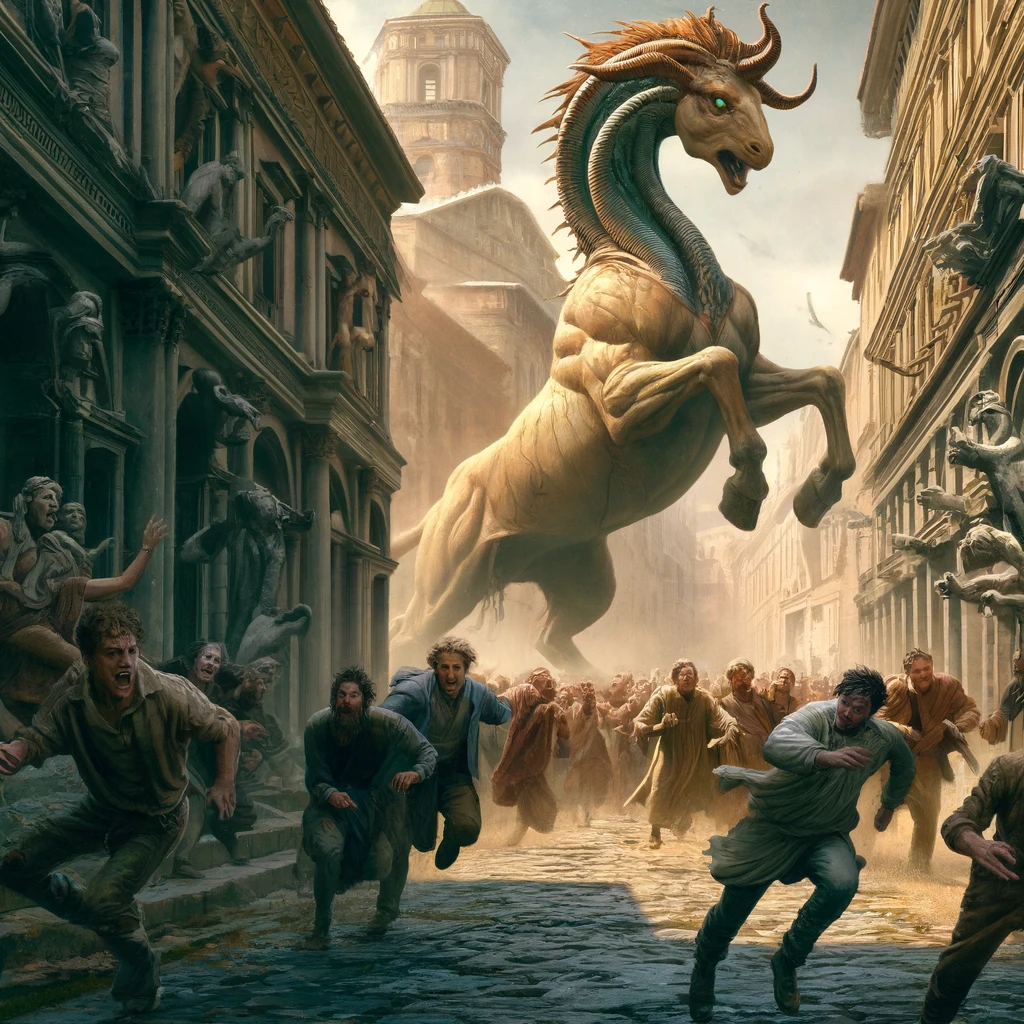
¶ The Charge of The Gorgons
Overview
"The Charge of The Gorgons" was a historical and controversial event in Absalom, originally instituted as a radical method for managing prison overcrowding. This event has left a significant cultural and physical imprint on the setting, particularly visible along Statue Street.
History
Initiated in the year 4008 AR by Valtias the Redeemer, who was then in charge of the Office of Prisons, the event was designed to reduce the number of nonviolent offenders in prison. The method was draconian: released prisoners were forced to run through a closed-off street while being pursued by a gorgon—a mythical beast known for its ability to petrify people with its gaze.
Execution
The participants, all nonviolent criminals, were set free if they survived the gorgon's charge. Those who did not survive were turned to stone, their petrified forms remaining as statues along what came to be known as Statue Street. This event was repeated annually, adding a somber yet mythic layer to the street's appearance.
Abolition
After seven centuries of tradition, "The Charge of The Gorgons" was abolished in 4714 AR following a tragic incident where a gorgon escaped its handlers and petrified numerous spectators, highlighting the uncontrollable dangers associated with the event.
Cultural Impact
Statue Street, lined with statues of the petrified, became a district symbol of wealth and prestige. Residents of the Westgate area, where the event was held, traditionally viewed the event as a spectacle and often acquired statues as a sign of status. The tradition has ingrained itself deeply into the local culture.
Contemporary Issues
Despite its cancellation, the event still stirs political and cultural tensions. A movement advocating for its reinstatement argues for the cultural significance and heritage of "The Charge of The Gorgons," leading to ongoing debates and conflict within the community.
Legacy
"The Charge of The Gorgons" remains a poignant reminder of the past's harsh realities and continues to influence the socio-political landscape of the area. The statues on Statue Street serve as a memorial to the brutal history and the lives affected by this ancient decree.